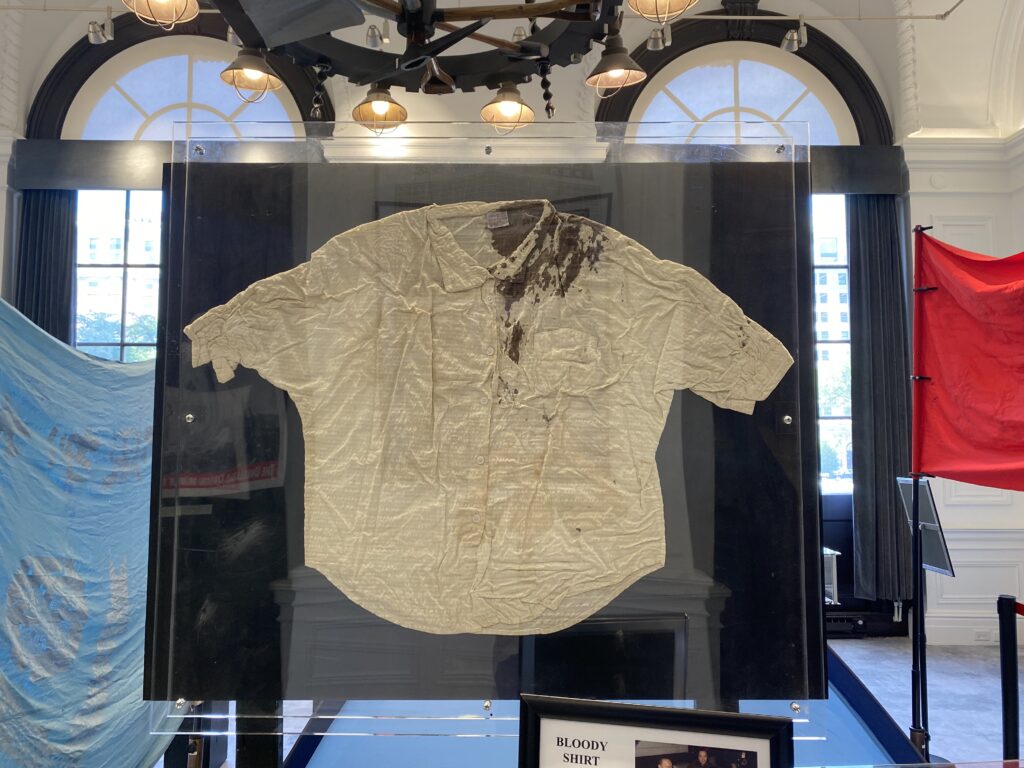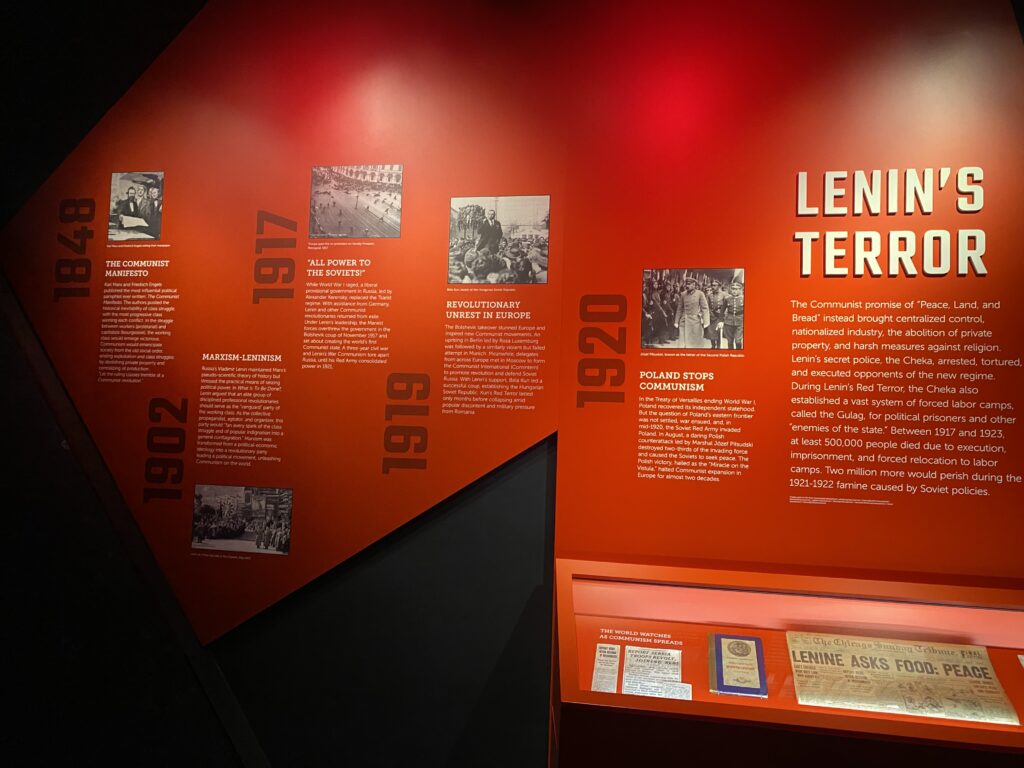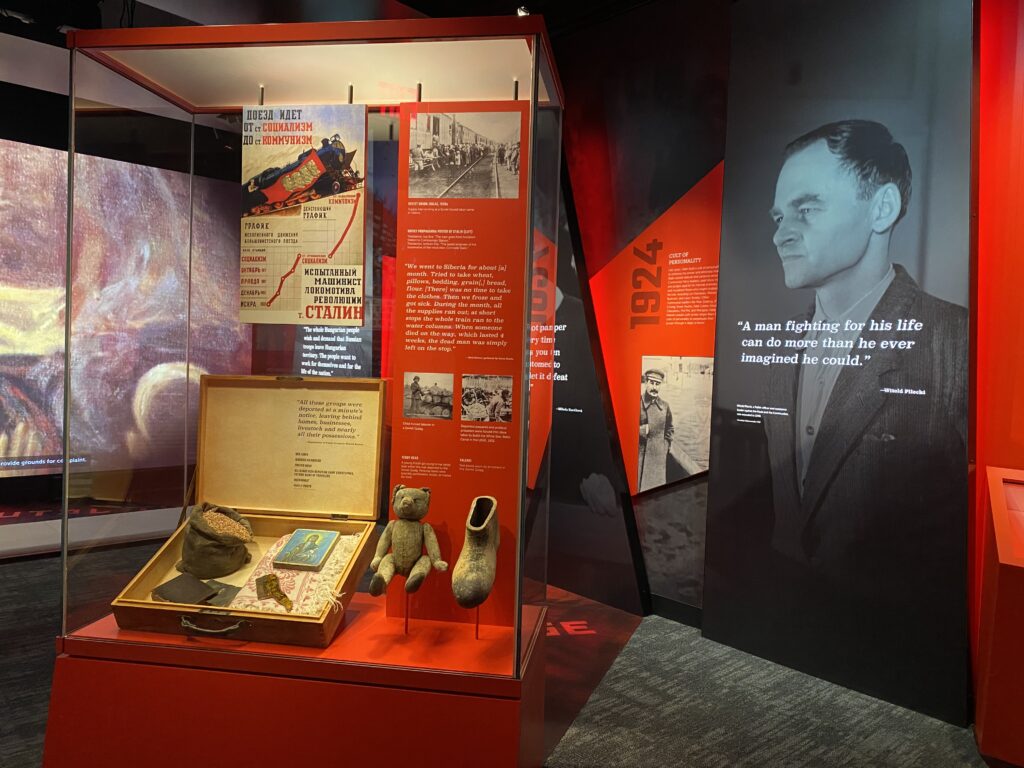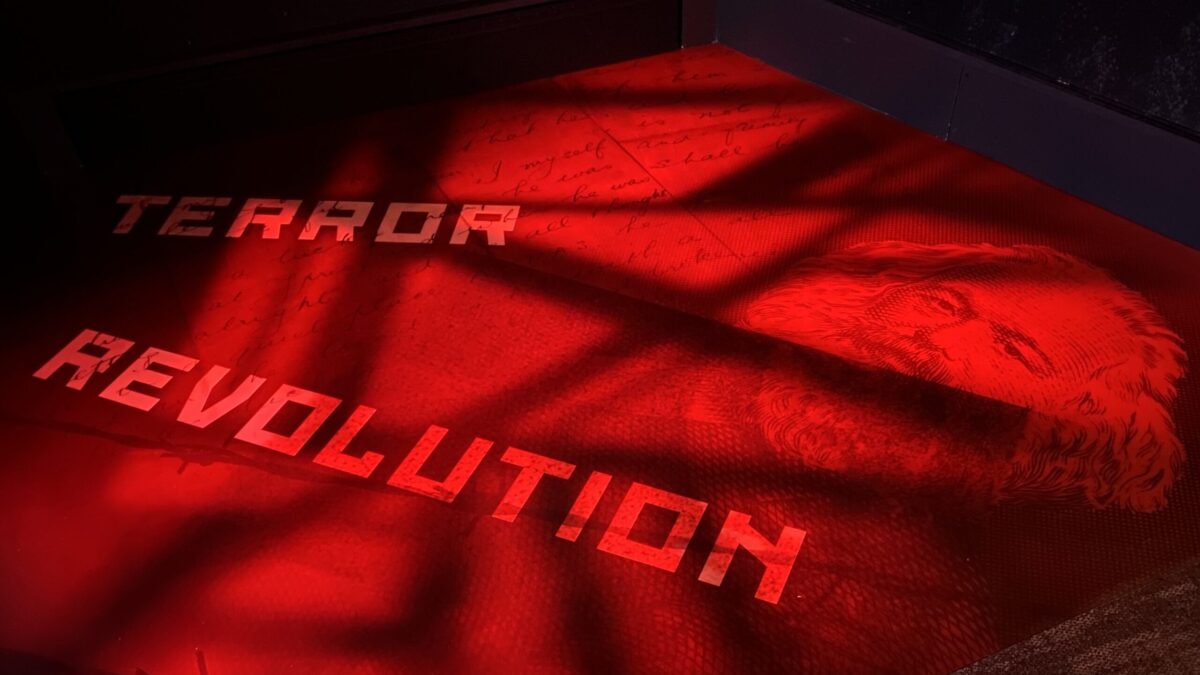At the Victims of Communism Museum, the story of a curious Chinese reporter in Tiananmen, 1989 is told on a plaque. Above it is the bloodied blouse she wore to work that day, never to return home.

Located right off the McPherson Square metro station in Washington D.C., the Victims of Communism Memorial Foundation’s new museum is their latest project in honoring the lives of victims and educating others about communism and its cost.
“Our goal was for people to learn about all different victims of communism, from children to anti-communist leaders to priests,” said Dr. Elizabeth Spalding, founding director of the Victims of Communism Museum.
A timeline of communism wraps around the walls of the entire exhibit, starting with Karl Marx’s Communist Manifesto in 1848, to the Bolshevik Revolution of 1917, to the tearing down of the Berlin Wall in 1989.

Visitors to the museum can see photos of victims, representations of the meager food rations they were allotted, contraband items such as magazines and vinyl records, and personal items and excerpts from victims’ personal diaries — providing a window into communism’s effects on their lives.

The highlight of the Victims of Communism Museum is an interactive, digital simulation of surviving communism. On a screen, visitors get to play as a character who lives under a communist regime. The game’s “choose your own adventure” structure makes players choose between survival and triumph, freedom and family, and shows the consequences of their actions. At the end of the game, it is revealed that their experience was based on the stories of people who are real-life anti-communist champions.
The museum also hosts a rotation of temporary exhibits on the second-floor gallery. Currently, the space hosts the exhibit “Tiananmen 1989,” which highlights the actions of the pro-democracy movement in China and honors the men and women massacred by the CCP on that fateful day in Tiananmen Square. Artifacts in the exhibit include one of the hundreds of tents protesters set up in the square, the bloodied shirt of a journalist, and flags inscribed with messages of hope and victory. “Tiananmen 1989” will be at the Victims of Communism Museum until December 2022.
While strolling through the museum, it is easy to think of communism as a concept of the past. One-fifth of the world, however, still lives under communist regimes in China, Cuba, Laos, North Korea, and Vietnam.
“Unfortunately, communism is not gone,” Spalding said. “It is not something that is dead, so we want people to come to the Victims of Communism Museum to learn about its past, but also to know about its living history.”
The Victims of Communism Memorial Foundation is a nonprofit organization dedicated to honoring the lives of over 100 million victims of communism through education, research, and human rights programs. Those who are interested in visiting the Victims of Communism Museum can visit their website for more information and to acquire tickets.









